Master Polaris Pool Cleaner Troubleshooting: Save Time & Money
October 02th, 2024
October 02th, 2024
Owning a swimming pool can be a dream as much as it can be a responsibility. The sight of a sparkling pool on a hot summer day is inviting, yet the maintenance required to achieve such perfection often looms larger than anticipated. Enter the Polaris Pool Cleaner, a device designed to take the grunt work out of pool care. However, like any machine, it’s not immune to hiccups. Understanding the basics of troubleshooting your Polaris Pool Cleaner can save you both time and money, ensuring your pool remains the oasis it was meant to be.
My journey with pool maintenance began a few years back when the Polaris became an unexpected member of our household. One sunny afternoon, instead of the usual smooth whir of the cleaner, there was silence. A quick internet search revealed common issues like blocked filters or tangled hoses. The solution was often simpler than anticipated, involving a bit of patience and some hands-on adjustments.
This guide is a collection of insights gained through hands-on experience and valuable tips from fellow pool owners. Each problem listed here is accompanied by straightforward solutions, making it accessible even for those who aren't exactly DIY enthusiasts. Whether you're dealing with a sluggish cleaner or a curious noise, the goal is to equip you with the knowledge needed to swiftly tackle these issues, leaving more time to enjoy the pool rather than wrestle with its maintenance.
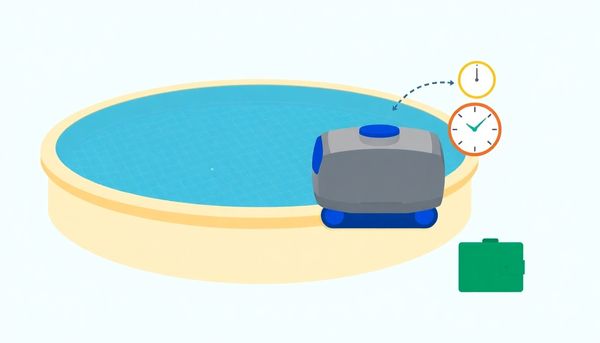
Encountering a stalled Polaris pool cleaner can be as frustrating as finding your car's engine refusing to start on a busy morning. Yet, before you resort to extreme measures like purchasing a replacement, a bit of hands-on troubleshooting might breathe life back into your underwater companion.
A stall often originates from a lack of adequate water pressure. Begin by checking the return line for consistent pressure. A malfunctioning pump or a clogged filter could be the culprit. If both seem in good condition, the booster pump might need a closer look—it’s often more economical to replace it rather than repair.
Another sneaky cause for a standstill involves the quick disconnect and its protective screen. This small component prevents debris from clogging your cleaner. Carefully detach it and inspect for blockages. A simple rinse might be all it takes to resolve the issue. Ensure the quick disconnect is intact because if it’s damaged, water will leak, robbing your cleaner of necessary pressure.
Lastly, give a glance to the drive belts—the unsung heroes behind the wheels’ movement. If they’re snapped or worn out, the remedy is straightforward: replace them. Checking the internal water tubes for secure connections can also be pivotal, as loose tubes diminish the cleaner’s operational pressure.
Equipped with this knowledge, you’ll transform from puzzled pool owner to adept troubleshooter, ensuring your Polaris cleaner resumes its diligent patrol of your pool’s depths.
Unraveling the mysteries of your Polaris pool cleaner often starts with the heart of its operation: the pressure and pumps. These components are vital for the smooth maneuvering of your little aquatic helper, much like a car engine's role in driving performance. When troubleshooting, think of the pump as the muscle and the pressure as the lifeblood circulating through your pool cleaner.
A telltale sign of pressure issues is when the cleaner halts abruptly. It’s like watching a toy car run out of battery mid-race. First, consider the pump’s health. If you’ve noticed a gradual decline in power, your pump might be whispering for attention. Maybe it's clogged with leaves or debris. A quick clean might bring it back to life, much like clearing drains to prevent flooding.
Another frequent culprit is the booster pump, essential for providing that extra oomph needed for a thorough clean. If pressure readings are low, this pump might be faltering. It’s akin to a bicycle losing its chain—everything else can be in perfect order, but without it, you're going nowhere.
Lastly, inspect the connections. Ensure hoses are tightly secured and free from cracks, which could leak precious pressure. A small crack might seem innocent, but in the pool world, it’s an open invitation for inefficiency. By maintaining these components, you'll extend the life and efficiency of your Polaris cleaner, ensuring it’s always ready to dive back into action.
Every pool owner knows the joy of watching a Polaris pool cleaner glide effortlessly across the water, turning chore into leisure. However, when this little helper decides to take an unscheduled break, it often signals a simple issue with the quick disconnect. This small yet crucial component is the unsung hero, ensuring your device receives the right pressure to do its job.
First things first, inspect the screen inside the quick disconnect. It's designed to catch debris from your filter, preventing it from clogging the pool cleaner. If that screen is packed with dirt or sand, the water flow diminishes, leaving your cleaner immobile. Removing and rinsing the screen under a strong jet of water usually does the trick. It’s a bit like unclogging a sink—surprisingly satisfying once you see the results.
While you’re at it, take a close look at the quick disconnect itself. A crack or break can spell trouble, leaking water and reducing pressure. If you suspect damage, replacing this piece is often more effective than any makeshift repair. And remember, a crack in this lightweight plastic part can be as detrimental as a fully clogged screen.
Even after a thorough cleaning, if your Polaris still refuses to move, consider checking the hose and pressure settings as these might require adjustments. These small steps can transform your pool cleaner from a stubborn statue back to its busy self.
Ever watched a Polaris pool cleaner become a tangled mess in the pool? It's like watching a robot on a mission suddenly lose its way. A common culprit behind this chaos is the unsung hero of the cleaning process: the hose. It might seem like a simple component, but mastering its length and flexibility can transform your pool cleaning experience from frustrating to flawless.
Firstly, consider the hose length. It's a delicate balance—too short, and your cleaner can't cover the full pool; too long, and it's prone to tangling itself up. To measure the ideal length, stretch the hose from the farthest point in your pool to the connection at the return jet, adding a bit more for freedom of movement. An oversized hose can be trimmed to the perfect fit, ensuring your cleaner navigates efficiently without a hitch.
Another trick involves enhancing the hose's flexibility. If your hose feels rigid, lay it out on a sunny afternoon. The sun’s warmth acts like a natural conditioner, softening the plastic and allowing for more fluid motion underwater. This flexibility reduces the chance of twists and knots forming as the cleaner zips around.
Lastly, inspect the hose's swivel connectors. These nifty mechanisms house ball bearings that enable smooth rotations. If they’re stuck, a dab of waterproof lubricant can work wonders. By paying attention to these details, you'll keep your Polaris pool cleaner moving, untangled, and efficient, letting you enjoy more splashes and fewer hassles.
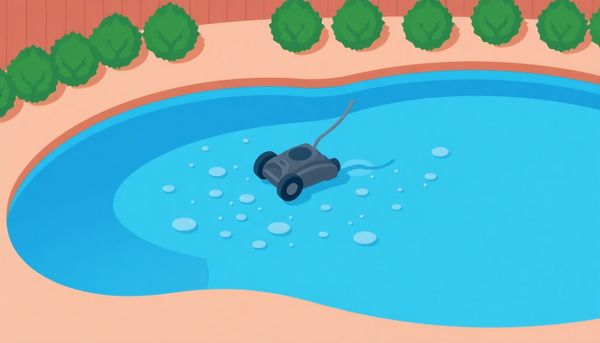
Weak pressure in a Polaris pool cleaner can feel like trying to vacuum a rug with a straw—frustrating and ineffective. First, let's focus on the foundation: the pool's filtration system. A clogged or dirty filter can significantly reduce water pressure. Clean the filter thoroughly, or replace it if it's beyond salvaging. This simple task may restore your cleaner’s vigor.
Another culprit is the pump. Ensure it's working at full capacity by checking for debris that might be jamming it. Sometimes, it’s just a matter of giving it a good flush. If you’re still facing issues, the booster pump might need attention. It’s a bit like the heart of your Polaris—it pushes the cleaner around. If it fails, replacing it could be the most efficient fix.
Inspect the hoses, especially the connections. A small leak can lead to a significant drop in pressure. Use waterproof tape for a quick fix, but for peace of mind, it’s best to replace faulty sections outright. Don't forget to check the quick disconnect fitting. The tiny screen inside might be clogged, and a simple rinse can often bring back full pressure.
Lastly, examine the internal water tubes. These unsung heroes manage pressure distribution. If one has slipped out of place, reattach it securely. With these strategies, your Polaris pool cleaner should regain its rightful place as the hardworking robot of your aquatic domain.
Pressure loss can halt your Polaris pool cleaner’s operation abruptly, and understanding the potential causes is crucial for restoring its performance. Start by examining the booster pump, as it’s the engine driving your cleaner’s movement. If the pump isn’t working correctly, the cleaner won't receive the necessary pressure. A quick check of the pump could reveal whether a simple adjustment or a complete replacement is required.
Equally important is inspecting the quick disconnect—a small but vital component that links the hose to the return jet. This part includes a screen designed to catch debris. Over time, this screen can become clogged, leading to reduced water flow. It's a bit like when your own coffee maker's filter gets blocked; the solution is straightforward—detach the quick disconnect and rinse it thoroughly to clear any obstructions. If the part is cracked or constantly leaks, replacement is the best course of action.
Next, direct your attention to the hose itself, which might be hiding small punctures or leaks. Although temporary fixes using waterproof tape might seem appealing, they’re often short-lived. A more durable remedy is replacing the hose. Moreover, examine the hose floats; if they fail to elevate the hose properly, the cleaner won’t receive adequate pressure, impeding its movement.
Finally, delve inside the cleaner to check for any disconnected water tubes. These tubes are responsible for channeling pressure efficiently. Ensuring they're securely attached can often solve your pressure issues. By addressing these potential pressure loss causes, your Polaris cleaner can resume its duties, ensuring your pool remains crystal clear.
There's something satisfying about watching your Polaris pool cleaner effortlessly glide across the pool floor. Yet, when it grinds to a halt, you can't help but feel as if you've been jilted by a once-reliable friend. Often, the culprit is something as inconspicuous as the quick disconnect. This small but vital component acts as a gatekeeper, shielding the cleaner from debris while ensuring optimal water pressure.
Start by giving the quick disconnect a thorough inspection. A bit of grit or a clump of leaves can easily clog the screen inside, effectively throttling the pool cleaner's performance. Gently detach the quick disconnect from the hose and the return jet. A simple rinse under running water should clear any obstructions. You might be surprised at how much muck a small screen can collect!
While you have the disconnect in hand, take a moment to inspect it for cracks or other damage. If it's broken, it won’t maintain the pressure needed to keep your cleaner moving. In such cases, replacement is the only option. This small investment could save you the headache of a stalled cleaner and keep your pool sparkling.
In the world of pool maintenance, sometimes the smallest components make the biggest difference. Ensuring your quick disconnect is in top shape not only helps your cleaner perform efficiently but also extends its lifespan, giving you peace of mind and a beautiful pool to enjoy.
Every pool owner understands the importance of a pool cleaner, especially when it comes to convenience. However, when your Polaris pool cleaner starts showing signs of leaks in the hose or valve, it’s crucial to tackle the issue head-on. The first sign of trouble might be a noticeable drop in cleaning efficiency or a suspicious puddle forming near the pool’s edge.
Start by inspecting the hose, which acts as the lifeline for your cleaner. Run your hands along its length, feeling for any cracks or tears. Detecting a leak early on can save you from a full-scale replacement. For minor leaks, waterproof tape can serve as a temporary fix, but it’s wise to plan for a new hose installation sooner rather than later. While you’re at it, check the connections between hose sections. The swivel connectors, if malfunctioning, can cause untimely tangles, affecting performance.
The valve, another pivotal component, can also be a source of leaks. If it’s spraying water unexpectedly or leaking, it might be time for a replacement. When replacing any part, confirm compatibility with your Polaris model - a mismatch could exacerbate issues instead of resolving them. Remember, maintaining proper water pressure is key to a smoothly functioning pool cleaner. With a bit of patience and attention to detail, hose and valve leaks can be a manageable task, ensuring your Polaris keeps your pool pristine without a hitch.
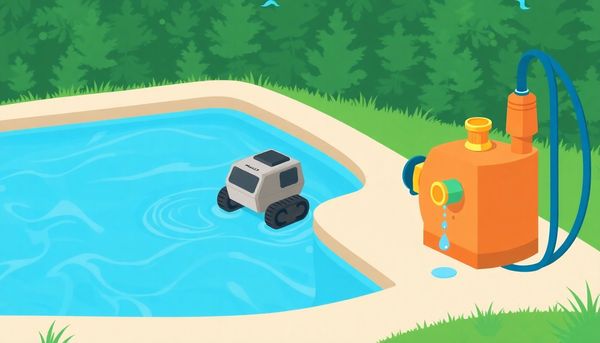
Hose leaks can quickly transform your reliable Polaris pool cleaner into an idle figurine at the bottom of your pool. Addressing these leaks swiftly is crucial to maintaining the pool cleaner's efficiency. My own experience with a sudden halt in pool cleaning revealed that the culprit was a sneaky hose leak. The pressure was insufficient because water was escaping through a tiny puncture that had gone unnoticed.
First, inspect the hose for any visible signs of wear or damage. Often, these tiny leaks manifest as small sprays of water when the system is running. A quick fix might tempt you to wrap waterproof tape around the hole. However, like bandaging a broken arm, this solution is temporary and not entirely effective. It's more of a stopgap measure, buying time until a proper repair or replacement can be made.
Investing in a new hose might seem like a hassle, but it’s a decision your future self will thank you for. Not only does it restore full cleaning power to your Polaris, but it also prevents potential issues from escalating. Additionally, ensure that the quick disconnect, the small but vital connector between the hose and the return jet, isn’t cracked or damaged. Even a minor flaw here can compromise the entire system’s efficiency.
In the world of pool maintenance, staying on top of hose leaks will keep your Polaris pool cleaner running smoothly, ensuring you can spend more time swimming and less time troubleshooting.
It's a sunny Saturday, and you're ready for a splash in the pool, only to find your trusty Polaris pool cleaner is on strike. Identifying what's wrong with your underwater assistant is crucial to getting things back on track. The first step is observation. Notice any unusual behavior? Maybe it's stopped moving entirely, or perhaps it's tangled up like a marionette on a bad day. Each symptom points to a different culprit.
For starters, if your cleaner has decided to park itself and enjoy the view, the problem might be low pressure. Check your pump and filter; they’re the usual suspects when pressure takes a nosedive. If they’re operating smoothly, the booster pump may be at fault. Consider the cost of repairs versus replacement, as sometimes newer models offer better efficiency.
Next, give the quick disconnect a quick glance. Clogged screens can halt operations faster than you can say "cannonball!" A simple rinse might be all it takes to get things buzzing again. Also, inspect the backup valve. If it's leaking or constantly spraying, it’s time to replace it.
Wheels not turning? It could be a broken drive belt. Lift the cleaner and manually inspect the wheels. If they’re stubbornly still, open the casing and check the belts. A new set should have everything rolling again.
Lastly, ensure that all internal tubing is snug and secure. Pressure loss can stall even the hardiest Polaris. Reattaching loose tubes or using hose clamps can solve this headache. By focusing on these potential problems, you can diagnose issues swiftly, saving both time and your poolside bliss.
Every summer, I find myself eagerly awaiting the first swim of the season. Nothing beats the refreshing escape from the heat, and my trusty Polaris pool cleaner ensures that the pool is always sparkling. But there's one crucial piece of advice that keeps this little underwater robot running smoothly: replace broken parts promptly.
Neglecting to swap out malfunctioning components can lead to a cascade of problems. For instance, a friend once put off replacing a cracked float hose. Eventually, the pressure imbalance caused the entire cleaner to stall, transforming a minor inconvenience into a complete system breakdown. This delay not only meant a costly repair but also days of manual cleaning—something we both hoped to avoid.
From experience, I know that the back-up valve is a key player in the cleaner’s performance, directing its movements with precision. A leaky valve or one that refuses to shut off can quickly derail the whole operation. Similarly, drive belts are the unsung heroes behind every smooth-running wheel. If they snap, your cleaner's mobility goes with them.
The trick is to act swiftly. Keep an eye on parts susceptible to wear, like the wheel bearings or connector swivels. Investing in quality replacements ensures that your Polaris continues to glide through the water effortlessly. It's a simple strategy that saves time, money, and keeps your pool ready for the next swim session.
Tangle-free hoses transform a pool cleaning session from a chore into a breeze. The secret lies in smart prevention methods that keep those hoses from becoming an underwater twister. Start by customizing the hose length to suit your pool's dimensions. While a little slack is essential for maneuverability, an excessively long hose twists more easily. To determine the precise length needed, measure the distance from the cleaner's position to the farthest point in your pool and add a bit of extra. Trim any unnecessary length to prevent unnecessary coiling.
Another handy trick involves harnessing the sun’s warmth. On a sunny afternoon, detach the hose and lay it out fully extended on your lawn or driveway. This allows any kinks or stubborn twists to relax under the sun’s rays, making the hose more flexible and easier to manage once submerged.
Keep an eye on the swivel connectors, too. These nifty components permit the hose to rotate, preventing tangles. Ensure they’re functioning smoothly by applying a touch of waterproof lubricant to the ball bearings within. Persistent issues might mean it’s time for a swap-out.
Lastly, monitor the cleaner's wheel revolutions per minute (RPM). Correct RPM settings ensure steady movement without unnecessary spinning, which helps minimize tangling risks. If you notice the wheels racing or dragging, adjust the RPM to maintain the perfect pace. By employing these strategies, your Polaris pool cleaner will glide effortlessly, leaving you with a sparkling oasis.
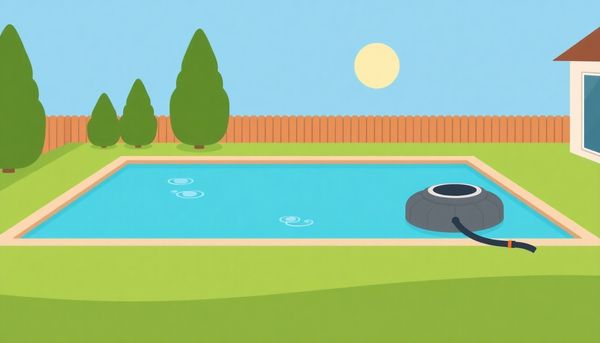
Every gadget has its quirks, and the Polaris pool cleaner is no exception. On occasion, replacing faulty components is necessary to keep your little underwater helper in tip-top shape. It's not as daunting as it sounds, and a little hands-on approach can go a long way.
Start with the basics: the wheels. Like the tires on your car, the cleaner’s wheels are subject to wear and tear. If you notice your Polaris struggling to move or veering off path, it’s time to inspect those wheels. A simple replacement can restore its agility, ensuring it glides smoothly over pool surfaces once more.
Moving on to the hose, this snake-like attachment is the lifeline of your cleaner. Leaks or kinks can disrupt its function, much like a garden hose that refuses to cooperate. If waterproof tape doesn’t cut it for temporary repairs, switch out the entire hose. This ensures optimal water flow and prevents frustrating stops.
Next, take a peek at the backup valve. This curious little device, responsible for those bursts of movement, can occasionally leak. If you catch it spraying water without prompting, it’s time for a swap. A quick change and your Polaris will be back to its efficient dance across the pool floor.
Ultimately, a bit of proactive component replacement can extend the life of your Polaris and keep your pool sparkling clean. Embrace the challenge, and enjoy the rewarding satisfaction of a well-maintained pool cleaner.
In the world of pool maintenance, diagnosing the cause of a malfunctioning Polaris pool cleaner can feel like unraveling a mystery with a series of clues hidden beneath the water's surface. The first step in this detective work often involves listening closely. If the cleaner isn’t making its usual humming noise, the problem might stem from the power source. A tripped circuit breaker or a loose plug could be the silent culprit. I once spent hours trying to figure out what was wrong, only to discover that the plug had slightly slipped from the outlet.
Next, consider examining the device's path. If your Polaris seems to be moving erratically or not at all, the power of observation can be your best tool. Sometimes, the cleaner’s wheels get jammed with debris or algae. I remember finding a stubborn twig lodged in my cleaner’s wheel, halting its progress entirely. Ensuring the wheels are unobstructed and free to turn can often solve the issue.
Moreover, water pressure is crucial. If your Polaris isn't moving, check the pressure gauge. A clogged filter or a malfunctioning pump might be hindering its performance. Cleaning or replacing these components can often set things right. In my experience, a simple cleaning of the filter basket can work wonders.
Finally, keep an eye on the hose connections. Any signs of leaks or loose fittings can dramatically reduce efficiency. Remember, patience and a keen eye for detail are your allies in troubleshooting. Each step brings you closer to a sparkling pool and a smoothly running Polaris.
When your Polaris pool cleaner hits a snag, often the solution lies in the details. Begin by examining the components that work tirelessly underwater. These parts may not shout for attention, but they sure do benefit from it. A thorough inspection of the cleaner’s moving parts can reveal much about its current state and potential issues.
Start with the wheels. Give them a gentle spin and look for any resistance or unusual noises. A friend of mine once found a small pebble lodged in a wheel that was causing her cleaner to stall. It’s amazing how such a tiny obstacle can halt the grand operation of your pool cleaner. If you discover any debris, clear it out carefully to restore smooth operation.
Shift your focus to the filter bag. This is where all the captured dirt and debris reside, and if it’s overflowing or clogged, your cleaner's efficiency diminishes. Empty the bag regularly and rinse it with clean water. You might even consider having a spare bag on hand, just like keeping an extra toothbrush—one’s in use while the other dries out, ensuring you’re always ready.
Lastly, inspect the hose and connections for any signs of wear and tear. A loose or cracked hose can lead to pressure loss. Once, while helping a neighbor, I noticed his hose had a tiny crack that was disrupting the water flow. Replacing it was quick and significantly improved his cleaner’s performance.
Regular maintenance and a keen eye can keep your pool cleaner running smoothly, just like the trusted sidekick it’s meant to be.
Sometimes the little heroes of pool care, such as the Polaris pool cleaner, start showing signs of wear. Like any hardworking machine, parts can degrade over time, causing a dip in performance. The key is knowing when to step in and swap out those tired components.
Consider the wheels that tirelessly spin day after day. If your Polaris cleaner seems to be on a leisurely stroll rather than a determined sprint across the pool floor, worn wheels might be to blame. Inspect them for signs of wear and tear. If they resemble smooth bald tires rather than rugged treads, it’s time to furnish your cleaner with a new set. This small change can restore its enthusiastic pace, allowing it to tackle debris with renewed vigor.
Then there’s the ever-important filter bag, diligently capturing leaves, sand, and all manner of pool invaders. With time, the bag may become too worn or clogged to do its job effectively. Keep an eye out for any frays or persistent blockages. A quick swap for a fresh filter bag can rejuvenate your cleaner, ensuring it continues to operate at peak efficiency.
Remember those drive belts, crucial for keeping the wheels in motion? A broken belt will halt your cleaner in its tracks. Regularly check these belts for cracks or breaks and replace them as necessary.
Replacing parts isn’t just a maintenance chore; it’s about extending the life of your trusty pool companion. By tending to these details, you guarantee your Polaris cleaner remains a devoted ally in keeping your pool pristine.
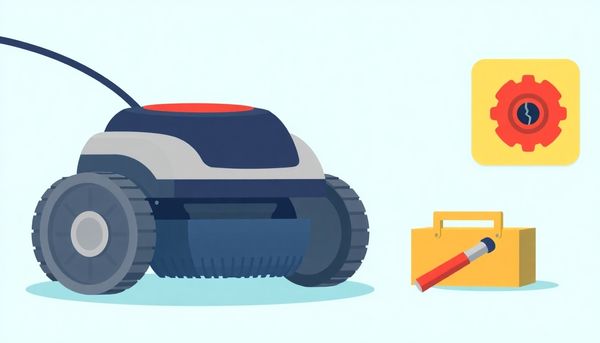
Dealing with tangled cables on your Polaris pool cleaner can feel like working through an underwater puzzle. A tangle-free experience is key to keeping these efficient little machines running smoothly. Start by assessing the length of the hose. A hose that's too lengthy can lead to more twists and knots than a thriller novel. Measure your pool’s depth and add a few extra feet to accommodate movement, but snip any unnecessary length. A snug fit means less twisting.
Next, consider the stiffness of the hose and power cable. Stiff cables are more prone to knotting themselves up as the cleaner moves. On a sunlit day, lay the cables and hoses straight across your lawn or driveway. The sun’s warmth will soften them, making them more flexible and cooperative when submerged in the pool. This simple hack can save you hours of unwinding frustration.
Pay attention to the swivel connectors. They are the unsung heroes preventing hose twists. If these aren't swiveling freely, it’s time for a bit of maintenance. Apply some waterproof lubricant to keep them rolling smoothly. Sometimes, just a little TLC can make all the difference.
Lastly, check the wheels’ RPMs. Misaligned speeds can cause the cleaner to dance around too vigorously or sluggishly, contributing to tangles. Adjust the wheel settings to recommended RPMs for optimal performance and a knot-free operation.
With these steps, your Polaris pool cleaner will glide through the water unencumbered, ensuring your pool remains a pristine oasis.
In the world of pool maintenance, even the smallest detail can make a big difference. One such detail? The length of your Polaris pool cleaner hose. While it might seem like a minor aspect, an overly-long hose can lead to a host of headaches, transforming your efficient little helper into a tangled mess.
Too much hose slack allows it to wrap around itself, restricting movement and reducing cleaning efficiency. Think of it like a leash on a hyperactive puppy—too long, and it’s bound to get knotted. To prevent this, measure your pool’s furthest point from the cleaner’s connection and add about a meter. This provides just enough length for maneuverability without excess.
I remember a time when my Polaris 360 was more adept at tying knots than cleaning the pool. After a few frustrating afternoons untangling hose spaghetti, I realized that trimming it down was the key. A simple adjustment transformed my pool cleaning routine from a constant battle to a hands-free breeze.
Additionally, consider the impact of water pressure. A long hose may lead to reduced pressure at the cleaner, inhibiting its performance. So, when troubleshooting, if your cleaner seems sluggish or sedentary, check the hose length. A quick snip could be all it takes to restore harmony to your pool cleaning process, leaving you more time to enjoy those crystal-clear waters.

This article provided insights into maintaining your pool. Start your pool care journey today!
Want to become a pool maintenance expert? Our free Pool School course covers everything you need to know about pool care. From basic maintenance to advanced troubleshooting, you'll learn how to:
Join over 10,000 pool owners who have already transformed their pool care routine. Get started with our free Pool School course today!